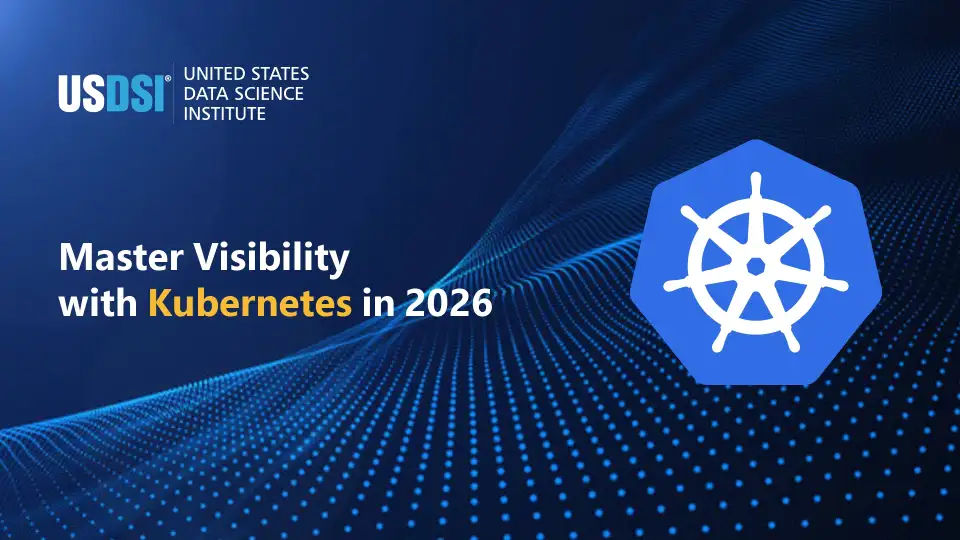
Kubernetes is the leading platform that has become the default substrate for modern cloud-related workloads. However, with the increasing cluster, with unprecedented growth and applications becoming more distributed (as well as AI-driven), Kubernetes monitoring and observability have become very important and a core engineering feature.
In 2026, this shift is becoming more evident, giving rise to trends like telemetry standardization, deeper kernel-level visibility, AI-assisted signal processing, and cost-efficient observability. In this article, we will explore these Kubernetes monitoring trends in 2026 and understand how professionals and teams observe Kubernetes today and their importance for future cloud-native operations.
OpenTelemetry as the Lingua Franca
OpenTelemetry has become a default thing in many stacks. Teams within enterprises look for a vendor-neutral and consistent way to collect metrics, traces, logs, profiles, etc. OpenTelemetry provides the APIs, semantic conventions, and the Collector working together to make that possible.
In the future, we might see more projects and vendors promoting OTel as the first-class ingestion layer for Kubernetes telemetry and for the expansion of semantic conventions, especially for databases and GenAI workloads. This will reduce vendor lock-in and make data routing simple.
eBPF: deeper, cheaper, and safer kernel-level signals
Observability is moving below the user-space. Many tools based on eBPF offer safe and high-resolution telemetry from the kernel without instrumenting every application. In Kubernetes environments, eBPF allows networks, syscalls, and container-level insights with low overhead perfect environment for debugging noisy production networking issues and latency spikes. The future will be more about continuous profiling, connection-level visibility, and auto-instrumentation hooks built on eBPF.
AI and Machine Learning in Observability Pipeline
Working with huge amounts of metrics, logs, and traces is practically not possible with just human capabilities. For Kubernetes observability in 2026, the platforms will increasingly apply ML and generative AI to identify root causes, group related incidents, and generate incident summaries that human professionals can easily read/understand.
Though these systems won’t replace SREs, they will significantly reduce the mean time required to detect (MTTD) and mean time to resolve (MTTR) by prioritizing signal over noise and suggesting remediation measures. Additionally, for those teams that use LLMs and generative AI apps on Kubernetes, observability can capture model-specific signals as well.
Data Management and Cost-Aware Observability
Telemetry is definitely valuable, until it costs more than the problem it is meant to solve. In 2026, data management is among the most important chores for professionals, be it sampling, smart retention policies, adaptive (hot and cold) data ingestion paths, or storage for long-term SLO analysis.
For this, organizations can combine short-term metrics like Prometheus with long-term traces and logs in cheaper stores, and at the same time rely on collectors to transform and filter data before export. This has particularly shifted the topic from “collect everything” to “collect what helps us deliver business outcomes”.
Service-Level Thinking: SLOs, SLIs, and Platform Engineering
Observability is not just technical telemetry; it is how teams’ reason about user impact. SLOs and SLIs are now deeply integrated into Kubernetes monitoring practices, where teams instrument meaningful SLIs such as error rates, request latency at P99, throughput, etc., and connect them with automated alerting and progressive rollbacks.
Platform teams (such as internal PaaS builders) embed these observability features into developer workflows and make SLOs and observability part of CI/CD pipelines or deployment templates. This ensures reliability in the developer lifecycle instead of keeping it as an ops-only concern.
Hybrid and Multi-Cloud Observability
Kubernetes deployments are mostly hybrid, i.e. on on-premises and cloud, as well as multi-cloud. This makes observability a bit challenging because of various factors, like:
The adoption of vendor-neutral standards (OpenTelemetry), along with architectural choices such as centralized collectors and cloud-native telemetry adapters, provides a clear and unified view through various environments and thus prevents vendor lock-in.
As we move towards the future, we can expect more managed Kubernetes observability in 2026 that can offer seamless ingestion from Kubernetes clusters in different clouds.
Integrating Security Telemetry and Observability
Today, security and observability are going hand in hand. Observability pipelines are continuously facilitating runtime detection, anomaly detection for lateral movement, container integrity signals, network policy telemetry, and more.
This convergence between security and observability helps teams detect security incidents faster and correlate them with performance incidents, for example, a crypto-miner causing CPU spikes. Observability teams and security professionals can collaborate and work together to decide which signals to keep hot and hot to route sensitive telemetry securely.
Practical Takeaways for 2026
Summing up!
Observability in Kubernetes has gone far beyond just dashboards and alerts. In 2026, it is a strategic capability that combines various elements, including open standards such as OpenTelemetry, low-level observability (eBPF), business-aligned reliability (SLOs), cost-aware data management, and AI-powered context.
The teams that stitch these pieces together and treat observability as a product and not as a side project are in a better position to run more resilient, secure, and cost-effective Kubernetes platforms.
This website uses cookies to enhance website functionalities and improve your online experience. By clicking Accept or continue browsing this website, you agree to our use of cookies as outlined in our privacy policy.